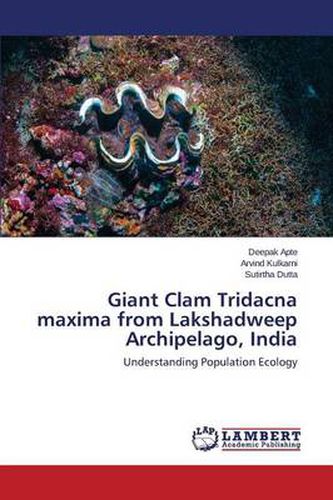Readings Newsletter
Become a Readings Member to make your shopping experience even easier.
Sign in or sign up for free!
You’re not far away from qualifying for FREE standard shipping within Australia
You’ve qualified for FREE standard shipping within Australia
The cart is loading…






This title is printed to order. This book may have been self-published. If so, we cannot guarantee the quality of the content. In the main most books will have gone through the editing process however some may not. We therefore suggest that you be aware of this before ordering this book. If in doubt check either the author or publisher’s details as we are unable to accept any returns unless they are faulty. Please contact us if you have any questions.
Giant Clams, as they are popularly known, are among the most specialized and the largest living bivalves. One of the species of Giant Clam, Tridacna gigas is known to grow over a meter in length. They have a narrow range of distribution and occur exclusively within tropical reefs under the Indo-Pacific faunal region. Giant Clam populations worldover have plummeted with many species facing threat of extinction due to unregulated harvesting for food, souvenirs and habitat destruction. Since last few decades, however, many efforts are being made worldwide to reintroduce them through mariculture. Despite these efforts, Giant Clam populations continue to decline globally. In India, Giant Clams occur only in Lakshadweep and Andaman and Nicobar reefs. Three species of Giant Clam are protected in India under Schedule-I of the Wildlife (Protection) Act, receiving the highest degree of legal protection any species can enjoy. The present study is the first in the Indian Sub-continent to understand the population ecology, status and conservation needs of Tridacna maxima and formed basis for developing Giant Clam species recovery plan for the Government of India.
$9.00 standard shipping within Australia
FREE standard shipping within Australia for orders over $100.00
Express & International shipping calculated at checkout
This title is printed to order. This book may have been self-published. If so, we cannot guarantee the quality of the content. In the main most books will have gone through the editing process however some may not. We therefore suggest that you be aware of this before ordering this book. If in doubt check either the author or publisher’s details as we are unable to accept any returns unless they are faulty. Please contact us if you have any questions.
Giant Clams, as they are popularly known, are among the most specialized and the largest living bivalves. One of the species of Giant Clam, Tridacna gigas is known to grow over a meter in length. They have a narrow range of distribution and occur exclusively within tropical reefs under the Indo-Pacific faunal region. Giant Clam populations worldover have plummeted with many species facing threat of extinction due to unregulated harvesting for food, souvenirs and habitat destruction. Since last few decades, however, many efforts are being made worldwide to reintroduce them through mariculture. Despite these efforts, Giant Clam populations continue to decline globally. In India, Giant Clams occur only in Lakshadweep and Andaman and Nicobar reefs. Three species of Giant Clam are protected in India under Schedule-I of the Wildlife (Protection) Act, receiving the highest degree of legal protection any species can enjoy. The present study is the first in the Indian Sub-continent to understand the population ecology, status and conservation needs of Tridacna maxima and formed basis for developing Giant Clam species recovery plan for the Government of India.